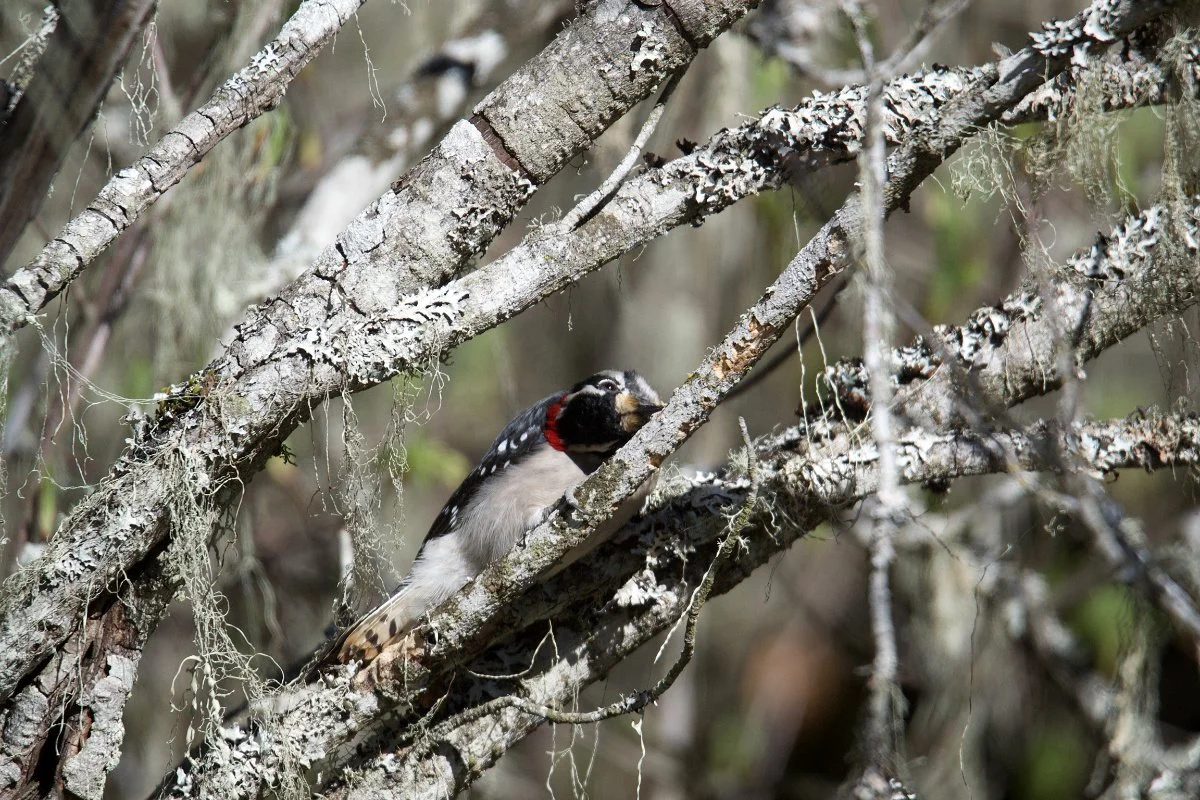The Golden-crowned Sparrow is a fall and winter resident along the Pacific coast and commonly encountered at the arboretum. They migrate north in the spring to nest in Alaska and western Canada.
In the summer during breeding, they have bold markings with a black crown and a bright-yellow forehead that changes to a light gray stripe on top of the head. The immature Golden-crowned Sparrow and the adult winter plumage, the black is brown and the yellow is duller and more subdued.
As I write this post I realize that I am not aware of the song of this bird, mostly I imagine because it probably doesn’t sing very often in its nonbreeding territory. That said, it is spring, and I am hoping that maybe it will start to warm up its vocal cords before it takes off. Peterson describes their vocalizations as: “Song three to five high whistled notes of plaintive minor quality, coming down in scale, oh-dear-me. Sometimes a faint trill. Call a sharp tsew.” Click here to listen on the Audubon website. The recordings are at the bottom of the sidebar on the right side of the first page.
At Mt. Pisgah, I observe them foraging along the edges of paths or meadows where they can easily slip into thickets of shrubs or blackberries for protection. During winter and migration, their diet consists of many kinds of seeds, fruits, grains, buds, flowers, and plant sprouts. They also eat insects like ants, wasps, bees, moths, butterflies, beetles, crane flies, and termites. Interestingly, their diet in summer is not well known but is probably a variety of fruits, seeds, and insects.
All About Bird writes’ “This sparrow is one of the least known of our songbirds, particularly on its northern breeding grounds. It has been the subject of only a few laboratory and field studies, so most of what we know about it comes from scattered notes in scientific journals.” So if you are looking for a way to spend your summer, think about going camping and studying Golden-crowned Sparrows.
Nature is an inexhaustible source of wonder. I look forward to seeing you out there.
Resources
“Golden-Crowned Sparrow.” Audubon, https://www.audubon.org/field-guide/bird/golden-crowned-sparrow. Accessed 30 Apr. 2023.
Golden-Crowned Sparrow Overview, All About Birds, Cornell Lab of Ornithology. https://www.allaboutbirds.org/guide/Golden-crowned_Sparrow/overview. Accessed 30 Apr. 2023.
Peterson, Roger Tory, et al. Peterson Field Guide to Birds of Western North America. 4th ed, Houghton Mifflin Harcourt, 2010.









































































